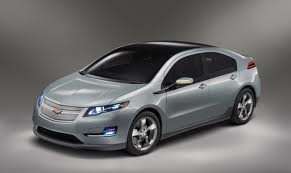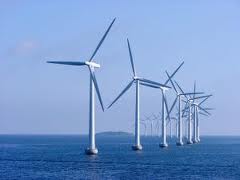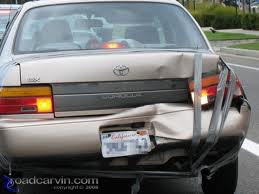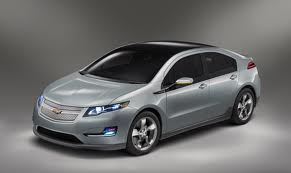Mass Murder?
 Monday, April 30, 2012 at 6:01AM
Monday, April 30, 2012 at 6:01AM It is not easy to know how many people have been killed by governments. Here is one estimate of deaths due to government mass murders.
- U.S.S.R.: 20 million deaths
- China: 65 million deaths
- Vietnam: 1 million deaths
- North Korea: 2 million deaths
- Cambodia: 2 million deaths
- Eastern Europe: 1 million deaths
- Latin America: 150,000 deaths
- Africa: 1.7 million deaths
- Afghanistan: 1.5 million deaths
- Hitler : 21 million deaths
This list did not include Hitler, I added him from the same source later in the article. Nor does the article include the 20 to 30 million killed by American actions since WWII. Nor does the list include the unintended consequences of one author, who may have killed as many as Communist China. The author I am referring to is Rachel Carson and the book, Silent Spring. This book, more than anything else, resulted in the banning of DDT. The ban killed millions. Here is one interpretation of the ban.
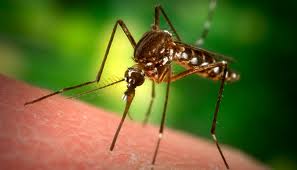 THE PERIL OF MALARIA AND THE PROMISE OF DDT
THE PERIL OF MALARIA AND THE PROMISE OF DDT
There are some 300 to 500 million reported cases of malaria each year, 90% occurring in Africa. According to the World Health Organization (WHO), about two and a half million people die of the disease each year, again, mostly in Africa, the majority of them poor children. Indeed, malaria is the second leading cause of death in Africa (after AIDS) and the number one killer of children there (with about one child being lost to malaria every thirty seconds). Many medical historians believe malaria has killed more people than any other disease in history, including the Black Plague, and may have contributed to the collapse of the Roman Empire. Malaria was common in places as far north as Boston and England until the twentieth century. Two thirds of the world lived in malaria-ridden areas prior to the 1940s.
That devastation all but stopped during the time that DDT use was widespread, around 1950-1970. Indeed, the discovery that DDT could kill malarial mosquitoes earned Dr. Paul MŸller the Nobel Prize in Medicine in 1948. DDT, a chemical pesticide synthesized by MŸller in the late 1930s, was initially used against houseflies, beetles, various farm pests, and typhus-carrying lice on the bodies of World War II soldiers and civilians. America and England soon became the major producers of the chemical, using it to fight malaria-carrying mosquitoes, especially in tropical regions.
In all, DDT has been conservatively credited with saving some 100 million lives.
FROM DISASTER TO HOPE...AND BACK AGAIN
Europe and North America have not harbored malarial mosquitoes since the 1940s. In one of the most miraculous public health developments in history, Greece saw malaria cases drop from 1-2 million cases a year to close to zero, also thanks to DDT. Meanwhile, in India, malaria deaths went from nearly a million in 1945 to only a few thousand in 1960. In what is now Sri Lanka, malaria cases went from 2,800,000 in 1948, before the introduction of DDT, down to 17 in 1964 — then, tragically, back up to 2,500,000 by 1969, five years after DDT use was discontinued there.
No one knows how many died as the result of the banning of DDT. This article suggests that 2.5 million die every year. Over 40 years that would be 100 million deaths. That would be as much as all the deaths by government in the 20th century. Since people did die from Malaria even with the usage of DDT, this should be on the high end of deaths caused by the ban of DDT.
Here is another estimate of the death toll:
As a result, it is estimated that between 30 million and 60 million died, most of them children. In Sri Lanka, malaria deaths went from 2.8 million in 1948 down to 17 in 1964 due to the use of DDT. They then banned DDT and by 1969, death rates were back up to 2.5 million.
Another estimate is around 50 million:
 Malaria sickens an estimated 500 million people every year. It kills up to 2 million annually, half of them children, most of the rest pregnant women. Malaria sends more African children to graves than any other disease—three times as many as HIV/ AIDS, according to UNICEF. Worldwide, children die from malaria at the rate of two per minute, or 3,000 per day. That’s the equivalent of 80 fully loaded school buses plunging over a cliff every day of the year.
Malaria sickens an estimated 500 million people every year. It kills up to 2 million annually, half of them children, most of the rest pregnant women. Malaria sends more African children to graves than any other disease—three times as many as HIV/ AIDS, according to UNICEF. Worldwide, children die from malaria at the rate of two per minute, or 3,000 per day. That’s the equivalent of 80 fully loaded school buses plunging over a cliff every day of the year.
How responsible was Carson for this? While I am quoting NewsMax, the piece was written by two doctors:
Ms. Rosenberg notes her surprise when she reread "Silent Spring" in preparation for writing her article: "In her 297 pages, Rachel Carson never mentioned the fact that by the time she was writing, DDT was responsible for saving tens of millions, perhaps hundreds of millions of lives."
Was Carson unaware of the large number of lives saved? Or was she like the hitchhiker my mother picked up one time that said that people should be killed to make room for the animals. The town I live in, a mountain community called Idyllwild, can be a very strange place. She never picked up another hitchhiker again! We do not know what Carson thought. But one has to wonder considering books from the 60's like Famine 1975 and The Population Bomb that predicted mass deaths from overpopulation. Was the desire to increase deaths in the third world an intended or unintended side effect of the ban on DDT? Working through my daughter's book on Rachel Carson with her, this seems unlikely.
Emerson is often misquoted as saying that consistency is the hobgoblin of little minds. What he said was that foolish consistency is the hobgoblin of little minds. Whether it is the foolish consistency of Ayn Rand who thought that the pollution scare of the 60's and 70's was a communist plot, or the foolish consistency of banning DDT for all uses even if the results are less than satisfactory in preventing malaria deaths, it seems that a little inconsistency is called for in some cases. Banning DDT for every use but the preventing of malaria may be one of these exceptions. You can be assured that I will not be drinking a DDT cocktail anytime soon—looks very dangerous to me.
I read Bjørn Lomborg's Skeptical Environmentalist years ago, here is how his website describes the book:
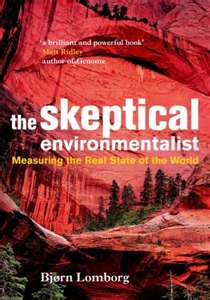 In The Skeptical Environmentalist Bjørn Lomborg challenges widely held beliefs that the global environment is progressively getting worse. Using statistical information from internationally recognized research institutes, Lomborg systematically examines a range of major environmental issues and documents that the global environment has actually improved. He supports his argument with over 2900 footnotes, allowing discerning readers to check his sources.
In The Skeptical Environmentalist Bjørn Lomborg challenges widely held beliefs that the global environment is progressively getting worse. Using statistical information from internationally recognized research institutes, Lomborg systematically examines a range of major environmental issues and documents that the global environment has actually improved. He supports his argument with over 2900 footnotes, allowing discerning readers to check his sources.
What made Lomborg's book so interesting for me is that although he did critique the alarmism of many, he was still very concerned about the environment. Environmental rules often make a lot of sense—I would say usually make a lot of sense. These rules are why Lomborg was able to say, and extensively document, that the environment is getting better. I remember the mania of the 60's and 70's. I do not want to revisit those times.
But I also do not want to return to the environmental practices of the 50's either. Nor do I want to support the modern conservative mania against common-sense environmental rules. No the environmental movement is not a socialist plot. Yet like any movement it is subject to excesses.
But this leads to my dilemma and the reason I am blogging on this. My daughter just finished a book about Rachel Carson. Carson had an interesting career. She is a worthy role model for my daughter in many ways. Do I mention the possible unintended consequences of Carson's work—the death of millions? Or do I ignore it? How can I make it a teaching moment? Do I call Carson the greatest mass murderer in history? I have seen this suggested, but it does not seem correct. Stacy is 8…I think I will wait on these ideas.
 Environment,
Environment,  Politics,
Politics,  Propaganda
Propaganda 
